Integrated Pest Management of Spotted Wing Drosophila in North Dakota (E1715, Revised June 2018)
Availability: Web only
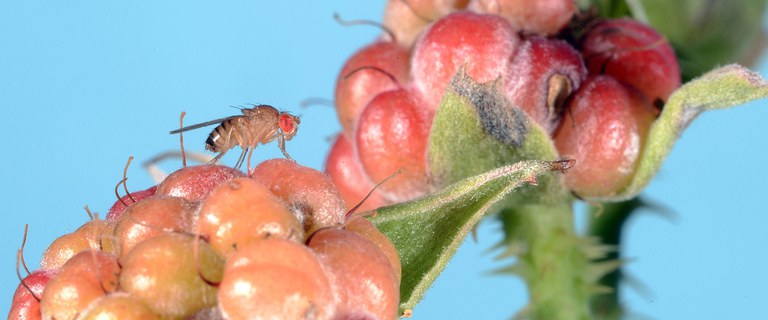
Adult SWD fly. (John Obermeyer, Purdue Extension Entomology)
The spotted wing drosophila (SWD), Drosophila suzukii, is a small vinegar fly with a huge potential to damage North Dakota fruits such as raspberries, tart cherries and other late-season fruit crops (Figure 1).
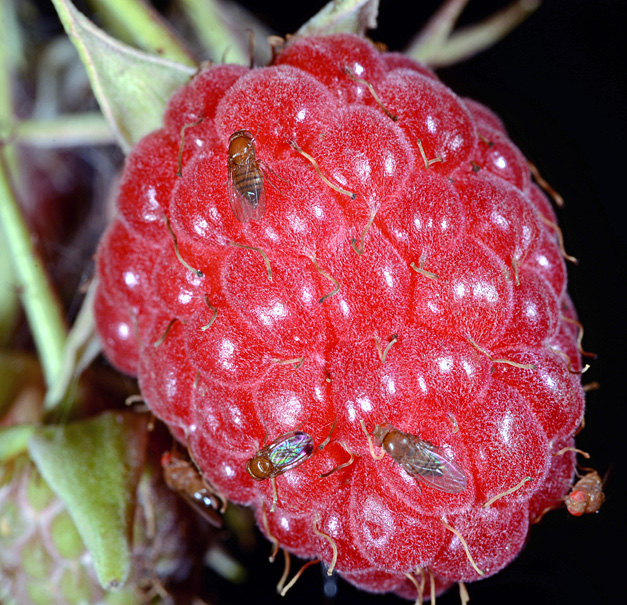
Figure 1. Adult SWD flies on raspberry fruit. (John Obermeyer, Purdue Extension Entomology)
Unlike other vinegar flies that prefer to attack overripe and rotting fruit, the SWD will also lay its eggs in healthy, ripening fruits. Eggs hatch into small larvae (or maggots) and then larvae feed on the fruit, causing spoilage. Historically, raspberry and tart cherry growers in the state did not need to apply insecticides just before harvest. Unfortunately, the introduction and spread of the SWD will change how we grow and manage late-season fruit crops in North Dakota.
The SWD is remarkable for its rapid spread across the U.S. Within just five years of its introduction to the continental U.S., it has been detected in more than 70 percent of the states, including North Dakota. This rapid spread emphasizes its invasive potential in North Dakota. Given its preferred horticultural hosts, widespread distribution and damage potential, learning how to identify and manage this invasive pest is important.
Identification
The following images illustrate some key traits for the identification of SWD adults that should be visible using a hand lens. Both sexes have red eyes and dark, unbroken bands across the top of the abdominal segments. Males are most easily recognized by their dark spot near the tip of the wing (Figure 2). The spot typically covers the area from the leading edge to the second vein. The males also possess combs of thickened hair on the first two tarsal segments of the front legs (Figure 3).
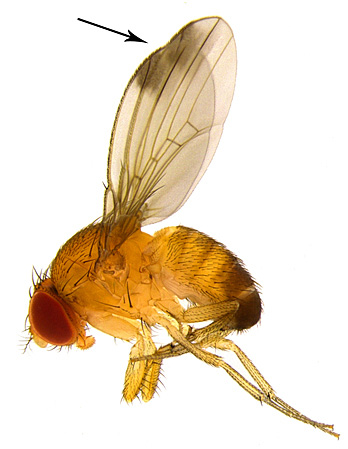
Figure 2. Male SWD showing spots on forewings. (Patrick Beauzay, NDSU)
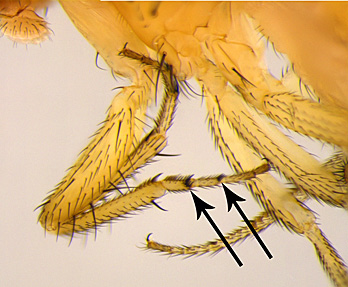
Figure 3. Male SWD foreleg showing tarsal combs. (Patrick Beauzay, NDSU)
Females lack spots on the wings and lack leg combs but have dark, strongly saw-like ovipositors with robust, closely-spaced teeth (Figures 4 and 5). Ovipositors of non-SWD species are weaker, with smaller, more widely-spaced teeth (Figure 6). Both sexes are about 2 to 3 mm long, with females being slightly larger than males.
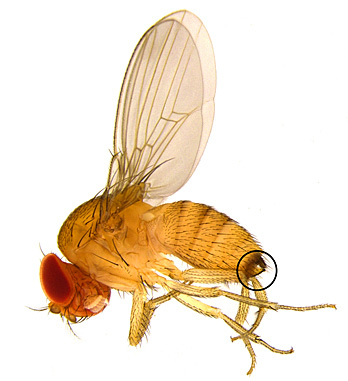
Figure 4. Female SWD showing position of ovipositor. (Patrick Beauzay, NDSU)
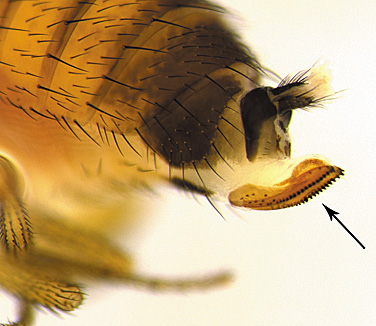
Figure 5. Close-up of SWD ovipositor. (Patrick Beauzay, NDSU)
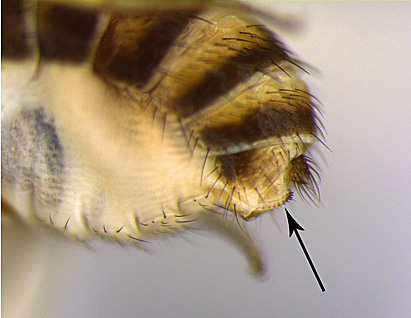
Figure 6. Close-up of non-SWD species ovipositor. (Patrick Beauzay, NDSU)
The SWD larvae are impossible to positively identify. However, Drosophila larvae found infesting healthy fruit are most likely SWD larvae.
Adults are easy to rear. Simply place infested fruit in a paper cup and cover the top securely with nylon hose. Adults should emerge in one to two weeks. Adults that have emerged then can be killed by adding 70 percent rubbing alcohol to the cup through the nylon hose.
Distribution and Host Range
The SWD is native to Asia. In the U.S., the SWD first was detected in Hawaii in 1980 and did not significantly damage Hawaiian fruits. California was the first state in the continental U.S. to report the SWD in 2008. In 2009, Washington, Oregon and Florida reported infestations of the SWD. By 2013, the SWD had spread to 36 states and most likely will continue to spread to nonarid regions of the country.
In North Dakota, it first was detected in 2013, and the insect is believed to be widely distributed throughout the state. This invasive pest first was detected in Carrington, N.D., in late summer of 2013.
Since 2013, SWD was found in 17 counties in North Dakota (Figure 7).
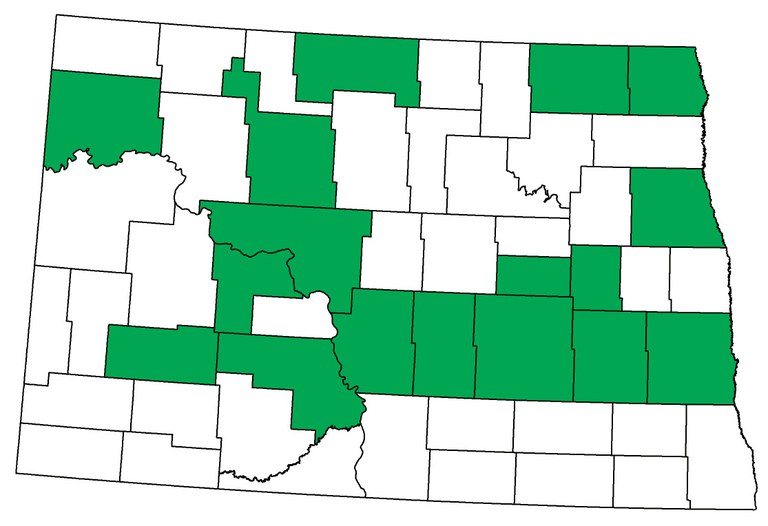
Figure 7. Counties with known SWD infestations in North Dakota.
To date, the SWD has infested grape, raspberry, Saskatoon Serviceberry, tart cherries and strawberry in North Dakota. However, data from other states suggest that it has a broad host range (Table 1). Thin-skinned fruits infested by SWD include blueberries, strawberries, blackberries and stone fruits (Figure 8). Thicker-skinned fruits such as apples, grapes and tomatoes also may be infested but usually only when the skin already is cracked (Table 1).
Table 1. Potential host crops and alternative hosts of the spotted wing drosophila in North Dakota.
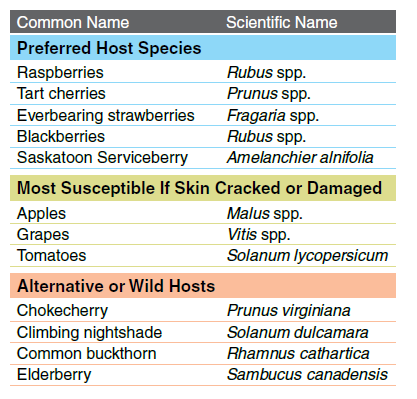
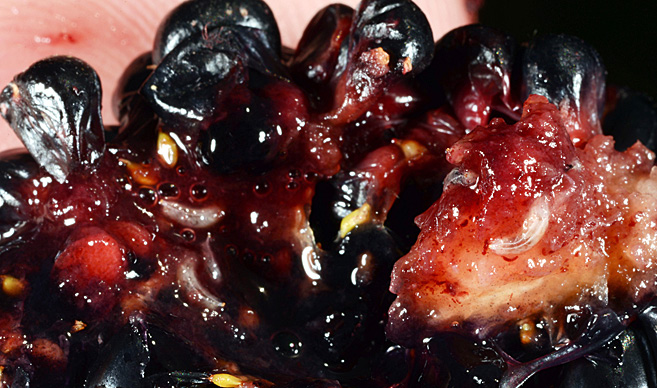
Figure 8. Blackberry infested with SWD larvae. (John Obermeyer, Purdue Extension Entomology)
Late-summer and fall fruit crops are most susceptible to damage because SWD populations increase rapidly in late summer. Earlier crops such as June-bearing strawberries, haskaps and honeyberries are less likely to be infested. Everbearing (day-neutral) strawberries and fall raspberries may be more likely to suffer damage due to their later-season ripening.
Ornamental and wild species that produce fruit also may serve as hosts. Chokecherries, elderberry, buckthorn and climbing nightshade may sustain SWD populations until preferred crops are ready (Table 1). Eradicate weedy hosts to reduce the habitat for SWD populations.
Life Cycle
Adult females lay eggs (Figure 9) in ripening fruit using a saw-like ovipositor to cut the fruit skin. The female will lay one to three eggs per fruit and can lay up to 350 eggs in her short lifetime. As the eggs hatch, the larvae (or maggots) burrow into the fruit and feed for five to seven days (Figure 10). After four to five days in a nonfeeding pupal stage (Figure 11), adult flies emerge from puparia in the fruit and mate.
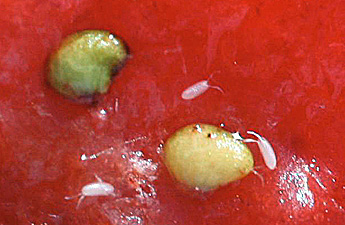
Figure 9. Eggs of SWD in strawberry fruit. (Hannah Burrack, North Carolina State University)
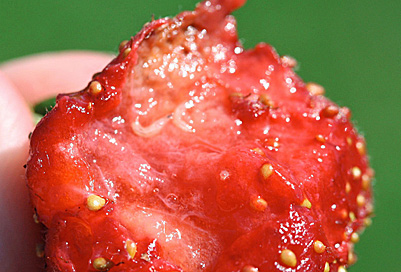
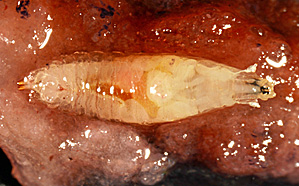
Figure 10. Larvae of SWD in strawberry fruit. (Hannah Burrack, North Carolina State University) (Closeup: John Obermeyer, Purdue Extension Entomology)
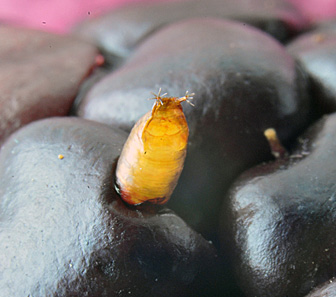
Figure 11. Pupa of SWD in blackberry. (John Obermeyer, Purdue Extension Entomology)
Multiple generations are produced each year, resulting in a significant increase in numbers in late summer through fall. In Japan, the SWD produces 10 to 13 generations per year. How many generations are produced in North Dakota is unknown.
It is unknown if SWD can overwinter in North Dakota and where it overwinters. Trapping for SWD in North Dakota indicate that first trap catches do not occur until July.
Damage
The SWD can inflict greater damage than native vinegar flies. Native species attack overripened or decaying fruit. In contrast, the SWD will lay eggs in healthy fruits that are in the process of changing colors, as well as in ripe and overripened fruit. When the female SWD lays her eggs, she leaves a puncture mark in the fruit that can act as an entry point for bacterial and fungal decay pathogens and other insects (Figure 12).
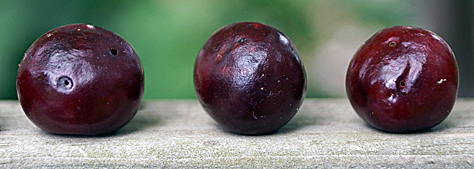
Figure 12. Egg-laying puncture marks in cherry from female SWD. (Kathy Wiederholt, NDSU, Carrington Research Extension Center)
Larvae also cause damage as they feed on the interior of the fruit (Figure 13). Feeding causes fruit discoloration, and sunken areas may appear within two to three days after the eggs hatch. Juice also may seep out of the oviposition wound. With respect to aggregate fruits such as raspberries and blackberries, the fruits may crumble when harvested or stick to the receptacle.
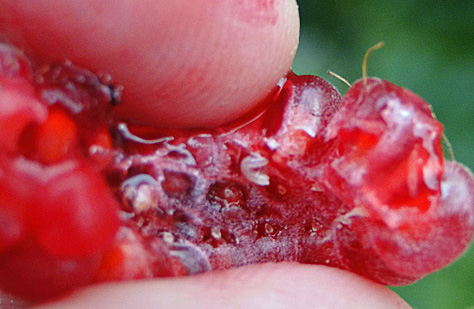
Figure 13. Damage to fruit by SWD larval feeding. (Hannah Burrack, North Carolina State University)
Larvae may not hatch until after the fruit is harvested. While not toxic, the presence of live larvae may render the fruit unpalatable to consumers. In some states, commercial producers have lost up to 80 percent of their raspberry crops from SWD damage.
In California, the SWD revenue losses for the raspberry crop totaled $39.8 million for the years 2009-2014 and did not include increased insecticide and labor costs. In 2014, a 31-state survey of berry growers estimated that SWD crop losses totaled $133 million.
INTEGRATED PEST MANAGEMENT
Monitoring Traps
Monitoring for adult SWD is critical because the presence or absence of adult SWD will determine whether management strategies are needed. Monitoring should begin when fruit begins to form and continue through the end of harvest.
Homemade traps are effective and easy to construct. Michigan State University Extension recommends using 32-ounce plastic containers as monitoring traps; deli food containers with lids work well (Figure 14).
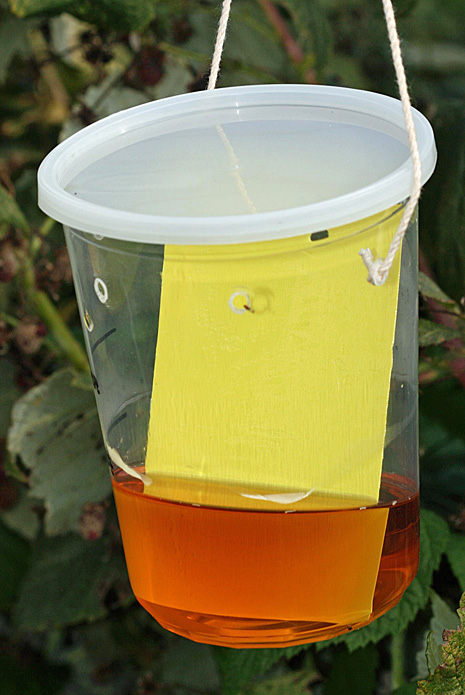
Figure 14. Monitoring trap for adult SWD flies. (Hannah Burrack, North Carolina State University)
The trap should have 10 holes (preferably 3/16-inch diameter) around the top of the container sides. Bait the trap with undiluted apple cider vinegar or a mix of yeast, sugar and water (1 tablespoon of active dry yeast, 4 tablespoons of sugar and 12 ounces of water).
Use about 4 ounces of bait per trap. A yellow 3- by 5-inch sticky card can be placed inside to trap flies (Figure 15), or add a drop of dish detergent to the bait in the container to break the surface tension of the liquid to trap flies. One trap per acre is recommended.
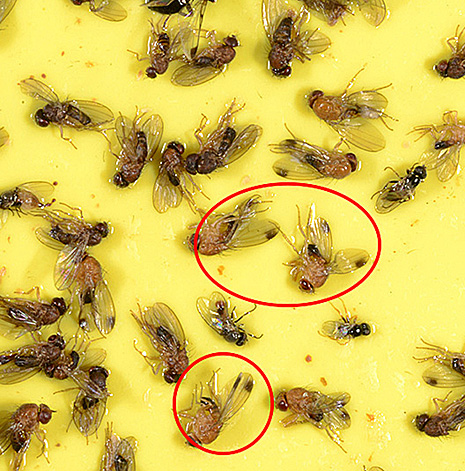
Figure 15. SWD flies stuck on a sticky trap. (John Obermeyer, Purdue Extension Entomology)
Low-cost commercial traps baited with pheromones (insect attractants) also are available for purchase through insect trap suppliers, such as Great Lakes IPM and Alpha Scents Inc. Some of these traps, such as sticky traps, do not use a drowning solution and are easy to use (see Figure 16).

Figure 16. Commercial yellow sticky trap baited with insect pheromone for SWD fly monitoring. (Caitlin Krueger, NDSU)
Traps should be placed in shaded areas near the fruit crop. The traps can be suspended from a tree branch or support stake using a wire hanger. Traps should be monitored twice per week, and bait and sticky traps should be changed once per week.
Do not discard old bait liquid near the orchard because it will continue to attract pests to the area. Trapping serves to monitor for adult SWD, but is not an effective control strategy.
Cultural Control
Several cultural strategies can be used to control the SWD. Harvest fruit on a regular schedule as soon as the first fruits are ripe. Do not allow ripe fruit to overripen or remain unharvested. Regular harvest and good general sanitation will remove potential SWD egg-laying sites and mitigate infestation from other pests, such as sap beetles and non-SWD vinegar flies.
Infested fruit must be destroyed. Infested fruit can be placed in a tightly sealed black plastic bag and kept in a sunny location for one week before disposal. Infested fruits also can be placed in sealed bags and put in a freezer at minus 20 F for one week to kill eggs and larvae.
Control of wild host species, such as wild raspberry, chokecherry, nightshade and buckthorn, on your property can help with SWD control.
Fruits or fruit clusters that are just beginning to ripen can be bagged in fine (less than 1 mm) mesh netting to prevent SWD egg laying. Suitable netting material can be obtained at local fabric stores. When using this method, be sure the mesh is not in contact with the fruit and the mesh is tightly sealed where tied around the fruit.
Consider growing berry varieties that ripen earlier in the season: for example, June-bearing strawberries rather than everbearing strawberries.
Canopy management is also very important. Opening the canopy of your fruit crop will make the plantings less hospitable because the SWD prefers cool, shady areas. Furthermore, thinning the canopy will enhance spray coverage of insecticides when they are applied.
Insecticidal Control
Insecticide use becomes necessary when nonpesticide strategies do not provide adequate SWD control. Home gardeners have a limited number of insecticide products to use. However, properly timed applications and product rotation, combined with cultural control strategies, should provide SWD control during the fruit-production season.
Insecticides are poisons. Personal safety is of paramount importance when storing, mixing and applying insecticides. Insecticide product labels carry important information on environmental and physical hazards, product storage and disposal, necessary personal protective equipment (PPE) and first aid, in addition to mixing directions, application rates and procedures. BE SURE TO READ, UNDERSTAND AND FOLLOW ALL PRODUCT LABEL STATEMENTS.
Insecticidal control is aimed at adult SWD. The following table lists products available to home gardeners (Table 2).
Table 2. Insecticides available for use by homeowners in North Dakota.

Insecticide sprays target only the adult flies. Eggs and maggots are impossible to control because they are inside the fruit. Therefore, insecticide applications should begin prior to SWD egg laying, but only when SWD have been detected in monitoring traps.
Egg laying begins when the first fruits begin to ripen and become attractive egg-laying sites and will continue until the last of the fruits ripen. Because SWD egg laying can continue for several weeks, rotating insecticide products is necessary to prevent the development of insecticide resistance, which could happen if a single product is used continually throughout the SWD egg-laying period.
In Table 2, the Insecticide Resistance Action Committee (IRAC) classification numbers are listed for each product. This number group indicates the mode of action of the active ingredient in the product. In a rotation schedule, do not follow one product with another that has the same IRAC number. For example, do not follow a malathion application (IRAC 1B - organophosphates) with another malathion application or a product that contains carbaryl (IRAC 1A - carbamates).
Product efficacy and residual activity also must be taken into consideration. Pyrethrins have very short residual activity of less than three days and degrade rapidly in sunlight. Malathion, carbaryl and spinosad should give five to seven days of residual activity. Pyrethriods are effective against SWD for seven to 10 days after application.
Preharvest interval (PHI) is the number of days between the last application of a pesticide and the safe harvesting of edible crops for immediate consumption. The PHI always should be observed, and is listed on the product label.
Most insecticides are toxic to pollinators, such as bees, and any insecticide applications should be made when bees are not foraging, especially in flowering crops. The best time to apply an insecticide is during the evening to minimize risk and exposure to bees and other pollinators.
References
Isaacs, R. et al. Spotted Wing Drosophila: A New Invasive Pest of Michigan Fruit Crops. Michigan State University Extension Bulletin E-3140, October 2010.
Dreves, A., and A. Langellotto-Rhodaback. Protecting Garden Fruits from Spotted Wing Drosophila. Oregon State University Extension Service Bulletin EM-9026, April 2011.
Vlach, J. 2010. Identifying Drosophila suzukii. Oregon Department of Agriculture.
Walton, V. et al. Recognize Fruit Damage from Spotted Wing Drosophila (SWD), Drosophila suzukii. Oregon State University Extension Service Bulletin EM-9021, December 2010.
Given its preferred horticultural hosts, widespread distribution and damage potential, learning how to identify and manage this invasive pest is important.

Revised June 2018

